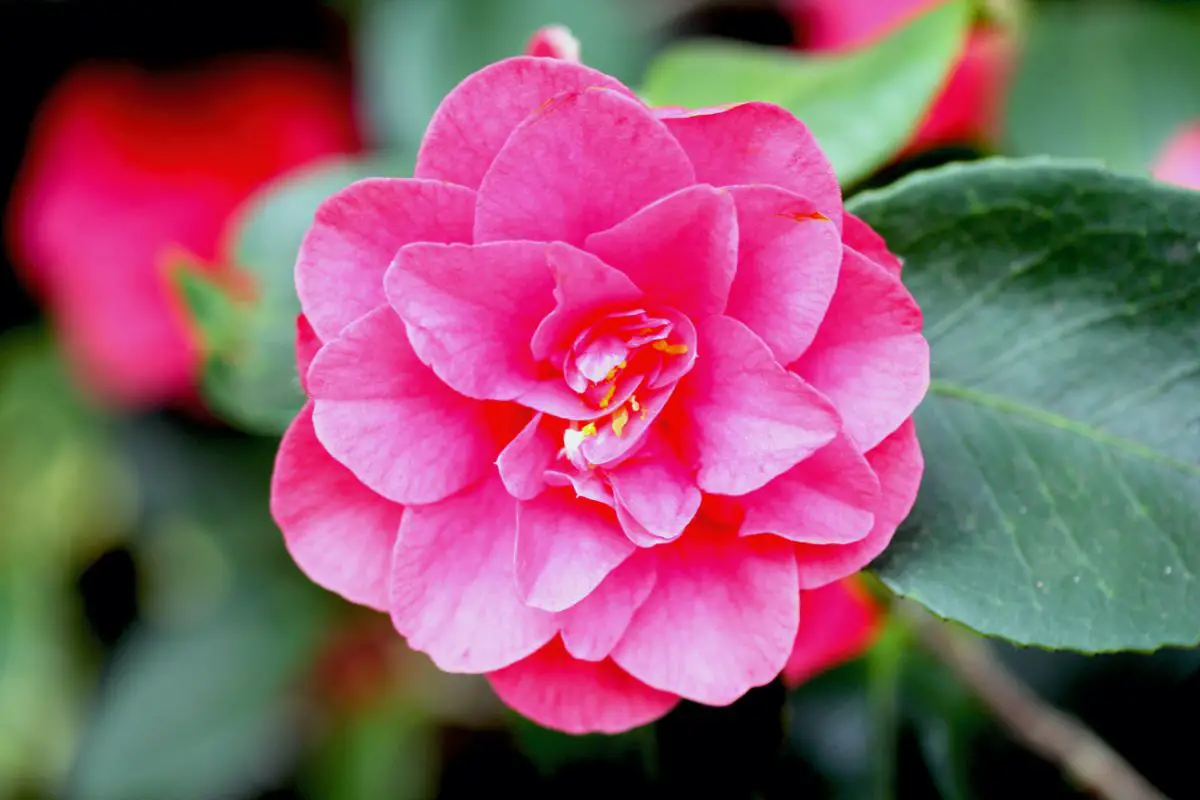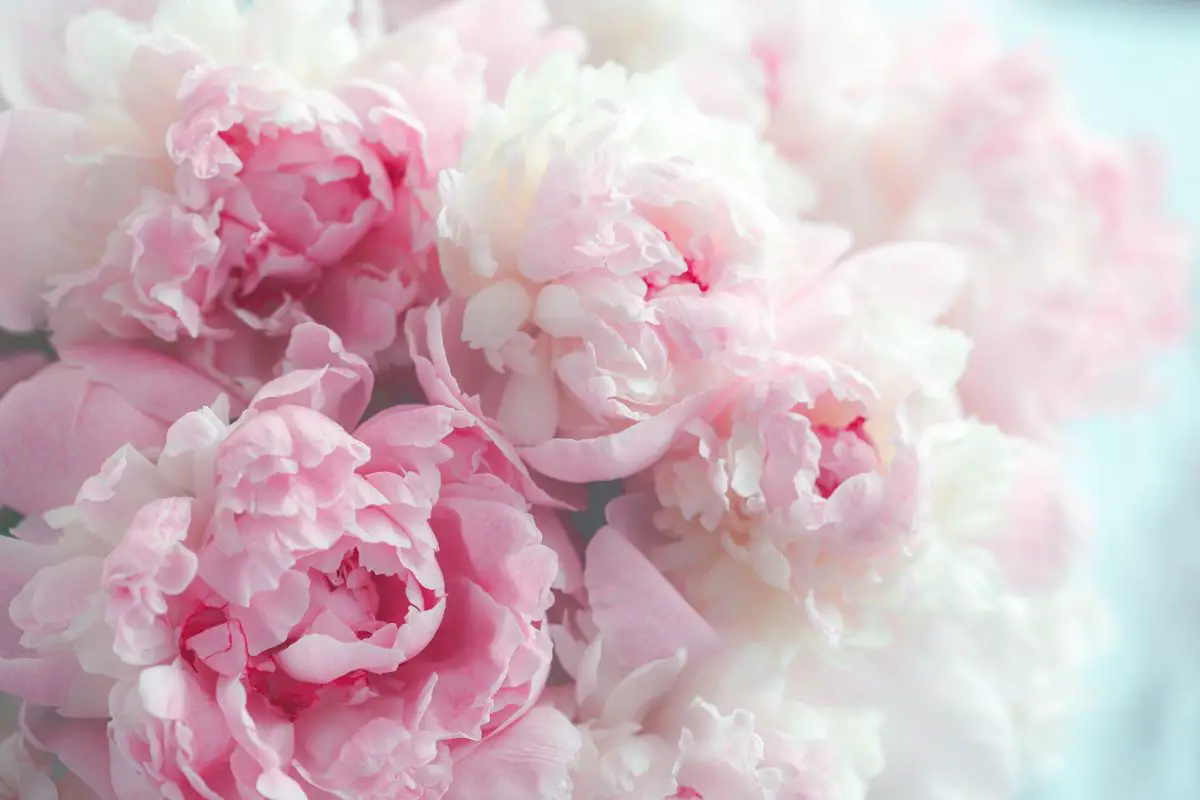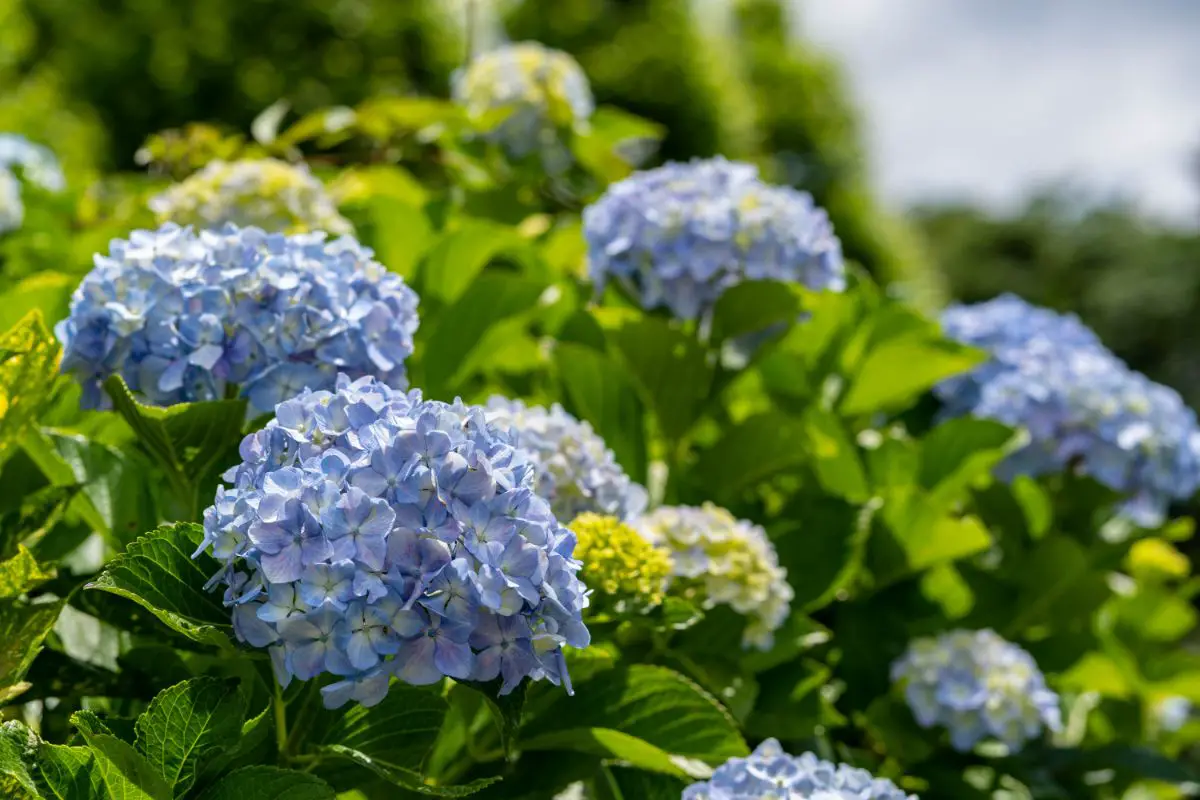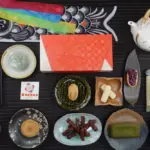Japan has a rich history and a beautiful, unique culture.
Within this culture, flowers play a very important role inclusive of all the aspects of Japanese culture, including that of Japanese art, literature and the general lifestyle.

Of course though, there are many Japanese flowers out there which bring their own beauty, glory and charm to the country – and each one has its own meaning and language.
This language in Japanese is known as Hanakatoba, and when we understand this a little better, we can truly appreciate the poetry, art and nature of Japan much more.
In this guide, we’ve included 15 of the most popular flowers with their connected meanings, each one with a very intriguing characteristic.
So, if you’re ready to learn more about these flowers and their meanings, then read on and discover the answers!
1. Kiku (Chrysanthemum)

We’ll kick off this list with one of the most glorious and popular flowers that Japan has to offer. Despite the fact that this flower technically originated in China, it’s a staple among Japanese culture and has important Japanese symbolism.
It is sometimes referred to as a Garden Mum, and this is likely due to its much larger size than many other flowers. The plant itself will produce very big daisies that appear shaped like a star.
Indeed, these showy style flowers will appear around the country in abundance around the fall season, and much like other flowers and plants around this time of the year, you will notice that they appear in a variety of gorgeous colors.
You can see them in a vibrant red, yellow, pink, coral or a pure white. Whichever color you see them in, they are absolutely perfect.
Within Japanese culture, the Kiku has a pretty special appeal. Within Hanakotoba, the flower represents trust, purity, longevity and nobility.
As a result of this, it has long been a symbol of Imperial families and the Japanese Emperor – which has been the case for centuries!
In fact, it is from this symbolism that you will find this flower on the Imperial seal, Japanese currency and Japanese passports – you can even find it on kimonos.
Along with all of these meanings, they can also symbolize sadness – and this is why it’s not uncommon to find the Kiku at Japanese funerals.
2. Sakuru (Cherry Blossom)

Next up, we have the official national flower of Japan which, along with its beautiful appearance, has plenty of symbolic meanings in Japanese culture.
In fact, this flower is so important that a festival known as hanami is held to celebrate its blooming return annually.
One such result of this is its symbolic meaning, which represents renewal, beauty, heart and accomplishment.
When new flowers bloom in the springtime, you will find the sakuru appearing with its gorgeous white and pink blossoms all around the country.
However, it’s important to note that the cherry blossoms do not stay around for too long, so there’s a limited window to see them in all of their glory.
This also provides another area of symbolism which is the circle of life. Essentially the cycle of birth, life, death and rebirth.
3. Rozu (Rose)

The rose is a very popular flower all over the globe and each nation will have its own representative meaning for it, but generally the rose symbolizes love and deep passion for someone.
In Japanese culture, this is no exception. You will find that there are huge numbers of Japanese gardens that house the rozu and when this flower is given to someone else, it symbolizes a strong affection and feeling for that person.
However, as you may be aware, roses aren’t all the same color.
In Hanakotoba, the white rose for example has a different meaning to the more popular red rose. The white rose represents innocence and silence – and these can be used for an array of things.
Pink roses on the other hand have a deeper meaning of confidence and trust in someone else, without having any romantic intentions or feelings for another person.
The yellow rose is on the other side of the scale though and it represents jealousy – therefore, this rose would not be a choice to use as a general rule. You’d need to be very careful with it!
4. Tsubaki (Red Camellia)

If you’re looking for one of the most striking flowers in Japanese culture, then look no further than the red camellia. It is often referred to as the rose of winter and it has a unique look that is just incredible.
Since the Edo period in the nation, this flower represents nobility and was used in funeral ceremonies when a noble death occurred, including that of Japanese warriors and Samurais.
As a result of this, the flower was often looked at as a symbol of love, respect and admiration to the deceased. It’s also important to note at this point that you should avoid giving this flower to people if they are ill.
This is because the flower beheads itself when it expires – and this is seen as bad luck in Japanese society.
Much like the rose though, this flower comes in different colors and types – which of course have different meanings.
The white camellia for example symbolizes waiting and patience, whereas the yellow camellia can symbolize longing for someone or something. It’s also common for the red camellia to symbolize perfect love, discretion and humility.
5. Botan (Peony)

Pretty much anywhere that you go in Japan, you’re likely to come across a botan.
Along with its abundance, it has plenty of meaning to it. It’s often referred to as the King of flowers due to its glorious appearance and exquisite shape.
Bizarrely, this flower has no negative connotations to it. Rather, it conveys wealth, great fortune, bravery, honor and respect.
As you can imagine, due to these symbolic meanings, it is a perfect flower to use at wedding ceremonies, to provide fortune to the bride and groom.
However, it doesn’t have to just be used at weddings. As there are no negative connotations connected to this flower, you can pretty much use it for all occasions that are meant to be happy and positive.
The only other thing to note with the botan in Japanese culture is its use in tattoos. If a botan is included within a tattoo, it can symbolize the person’s devil-may-care attitude and a reckless nature.
6. Manjushage/Higanbana (Spider Lily)

The red spider lily looks really pretty objectively speaking, but unfortunately it is a symbol of sadness and death.
Whilst the flower is something to behold and enjoy aesthetically speaking with its long stamens and curly petals, it has plenty of negative connotations.
Having said that, it is sometimes known as the other shore flower, which is due to its bright colors which are said to symbolize the bright light on the other side – in the afterlife.
One of its key meanings is that of a final goodbye, so it’s very common to see these flowers used at funeral ceremonies. In fact, there is a legend that says these flowers grow in places where couples part forever.
When collated into a bouquet, the red spider lilies can represent fire, but once again – this is more focussed negatively rather than other meanings that fire can allude to.
The blue spider lily on the other hand though has a much more positive connotation. These flowers can represent truth, purity, freedom, accuracy, stability and inspiration.
As a result, it’s common to see these flowers used in Japanese media such as anime.
The white spider lily represents simplicity, freshness, wealth and positivity – so this flower is often seen as good luck for some.
The orange spider lily can be a symbol of enjoyment, pride and success – so once again, this can be an excellent positive beacon for some people.
On top of this, the orange spider lily has a vibrant, incredible color and its appearance makes people happy in general.
7. Kaneshon (Carnation)

In Japan, the carnation is a symbol of love for the family, so it’s a flower that you might pick and hand to your siblings, father or mother to show your huge appreciation for their love and presence in your life (want to learn how to say ‘Mother’ in 7 different ways? Read here).
The carnation comes in an array of colors and all of them look beautiful with velvety textured petals – perfect for wedding attire in Western culture.
The red carnation is one of the most popular of its kind and it is a very common flower to give to your mother on Mother’s Day.
As a result of this, it is not just a flower to symbolize such meanings in Japanese culture – but it extends all over the world.
The symbolic meaning of love, care, appreciation and continuation is something that provides a lot of positive vibes, so it’s definitely a flower that has become very popular and indeed very important in Japan.
8. Kosumosu (Cosmos)

The Japanese cosmos is relatively similar to that of the Japanese sakura, and this is the reason why when it is written in Chinese characters, its name is translated as the autumn sakura.
It is another flower that found its way to the nation during the Edo period and nowadays it can be found in abundance during the summer right through to fall.
There are a plethora of meanings for this flower, but primarily it represents cleanliness, freshness, purity of heart and love for one another.
9. Churippu (Tulip)

The word tulip actually means turban in Persian and this makes perfect sense when you look at the shape, which is very similar to that of a turban.
Much like roses, tulips are seen all over the world and have become very popular, which is certainly the case in both Japan and European nations – which again makes sense as tulips have over 3000 different varieties.
One of the most used representations of the tulip is eternal love, but the yellow tulip means love for one side. The red tulip however is often given to someone if you want to wish them good fortune with fame, rather than riches.
In other cultures though, the red tulip is often given to someone as a symbol of real love and burning passion.
10. Himawari (Sunflower)

As you will likely be aware, sunflowers are found in plenty of countries all over the world and every country will look upon the sunflower in their own way.
However in Japan, the sunflower is seen as light and radiant – likely due to the fact that the sunflower looks like a beaming sun – but it can also represent a level of respect to the recipient.
There are multiple reasons why the sunflower is so popular, and this is not just due to its beautiful appearance.
When the sunflower grows, it usually grows in large amounts, and this gives the look of a sea of sun when you see so many together.
In fact, as the sunflower is so popular, there is a festival held every year in Japan to give respect and admiration to the flower’s beauty. As a result of this, the sunflower also has connotations of admiration, respect, longevity and love for nature.
On top of this, the sunflower is sometimes a symbol of good fortune and prosperity.
11. Fuji (Wisteria)

The Japanese wisteria can be described as looking like a bunch of grapes when they are seen in their natural springtime hanging. They grow on a wooden vine which can go as much as 20 meters in length!
Depending on which species of wisteria we’re talking about, some can be found in early summertime too, and both seasonal wisteria have a huge amount of beauty.
Due to their historical usage, the nobility would often wear these flowers and this meant that common people were banned from wearing purple.
However, in the modern era, anybody can use them and they’re a common sight within landscaping.
Because of their color, which is a huge favorite in fashion, they’re often used for patterns with clothing – for example with kimonos.
Other than nobility, wealth and status, the wisteria is a representation of purity, refinement, tenderness and sometimes fragility.
12. Shobu (Iris)

The Japanese iris is often used as a symbol to bring about good news and happiness. They have an incredible shape and their orchids are filled with color and a glorious texture.
However, with each color variation, you will find its symbolism is different. For example, the purple iris is often a representation of both honor and wisdom, whereas the blue iris is usually associated with faith and hope.
This particular flower is something that symbolizes good news and courage and due to this, it is a flower that holds a place for special honor – something that makes it ideal for celebration.
Bizarrely though, this flower has changed throughout the years for what it represents and how it is used.
Whereas nowadays you could use an iris on household furniture and even some hairstyles, years ago it was thought to be able to ward off colds and flu.
13. Ume (Plum/Apricot Tree Blossom)

When these blossoms are in total bloom, you’ve never seen such a magnificent sight.
On top of their beautiful appearance, they also have an amazing aroma which makes everyone so happy and is described as being like a sweet-flavored honey.
In fact, the fruits of these flowers are actually edible! Indeed, this flower is so versatile that it is one of the most suitable flowers for the use in bonsai.
While these blossoms can vary in terms of their color, from a red, pinkish red and white, their meaning is often associated with purity of heart, elegance and faithfulness.
This flower actually originates from China, and there is a Japanese legend that talks about how a delegate came back from China and introduced the tree into Japan.
14. Sumire (Violet)

One of the most interesting things about this flower is its name (for some cute Japanese flower names that are perfect for girls, check out our guide here). It’s an incredibly beautiful flower and its name sumire is derived from the two Japanese words sumi and ire. When put together, these words mean ink container!
These violets tend to grow in small batches, but this does not take away from their beauty.
Their bright and vibrant colors always improve and enhance their settings, and this makes them ideal for homes and gardens.
In Japanese culture, the violet represents sincerity and small bliss or small love. A result of this is that they are often used for a thank you present to other people.
15. Ajisai (Japanese Hydrangea)

Finally on our list we have one of the most famous flowers in South East Asian history. They’re incredibly diverse and absolutely stunning with their colors and shape.
Generally speaking in Japanese culture, these flowers can represent strong emotion for someone – and this makes them a common flower to pick if you were trying to apologize or make amends with someone.
However, it’s important to note that the colors change their meaning. Blue hydrangeas can be associated with heartlessness whereas pink hydrangeas can represent pride.
Despite this though, these are very popular flowers and annually you can find a festival to celebrate their glory and their beauty.
Final Thoughts
Japanese culture is so amazing and when it comes to flowers, this of course is no exception. We hope we have been able to answer any of your questions that you may have had about these beautiful flowers!









